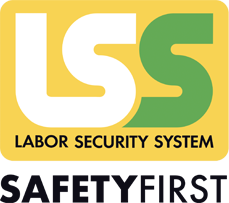5 ways to prevent accidents with flammable liquids
Flammable liquids can quickly initiate catastrophic events: they can be fatal and bring devastation to business, the community and the environment.
In order to increase knowledge about the importance of safety in the field of flammable liquids, we will highlight below five different types of chemical fire incidents and suggest consequent tips to reduce the risk of flames and explosions in the workplace.
1. Conducting preoperational checks
A worker sprays flammable paint under a gas water heater to kill mould and bacteria; the person forgets to turn off the gas heater and the fire ignites the paint causing a backfire. The hospitalisation of the operator with burns to the face, neck and upper body is inevitable.
Cases like the one just described can be avoided if the company develops and provides clear procedures for personnel handling and storing flammable liquids.
These security measures include:
• Clear the area of potential ignition sources.
• Switch off gas and electrical appliances that have thermostats and pilot lights.
• Ensure adequate ventilation.
• Use personal protective equipment correctly.
2. Carrying out preventive maintenance
While an attendant is checking the fuel flow between two filters, pressurised oil started to leak from a boiler. The oil splashes around the room covering the walls, the worker himself and catching fire: the worker is hospitalised with second degree burns.
Investigations will show that the equipment regularly registered leaks of flammable liquid.
The example shows how ignoring maintenance activities for machinery and equipment can be particularly dangerous.
Draw up a checklist for the inspection and maintenance of:
• Air vents and ducts - accumulations of dust and debris in these areas can easily ignite.
• Lubrication - poor or insufficient lubrication can generate friction, heat and sparks.
• Oil and liquid siphons - do not allow the accumulation of flammable waste.
• Belts, filters, gaskets - worn parts and materials can create friction and equipment malfunctions
• Calibration - uncalibrated machines can overheat and generate malfunctions
• Electrical connections - if faulty they can give rise to discharges and sparks
3. Train employees to recognise a hazard
A mechanic is cleaning the metal workbench with liquid alcohol and a rag. The liquid is on a bench in a plastic container without a cap: a spark ignites the alcohol and its vapours causing a 12-day hospitalisation of the worker. The latter had been properly trained in safety with chemical elements involved.
Train your employees so that they know how to use chemicals correctly and understand which materials and substances can generate fires, explosions and reactions if stored close together.
Your training programme should include:
• Fire and explosion risks associated with workers who handle chemicals on a daily basis
• What can be enough for a chemical to ignite, burn or explode
• Specific examples of trigger sources
• Cleaning procedures
• Personal effects, materials and prohibited substances within the work area
4. Separation of chemical agents
An employee is cleaning tools and components with toluene. Working inside an enclosed mixing room, he started to transfer the hydrocarbon from one barrel to two smaller plastic containers. Next to the toluene is an almost empty barrel of methyl isobutyl ketone; near the toluene, ignition occurs for unknown reasons and a flashback hits the second barrel, causing it to explode.
The worker suffered burns to 90% of his body and died 11 days later in hospital.
This tragic accident could have been avoided if the chemical agents had been correctly and separately stored.
Make sure that at your workplace:
• A risk assessment is carried out on all highly flammable liquids.
• Dangerous goods are correctly divided according to legal requirements.
• The mixing room is equipped with a dedicated cabinet for flammable liquids.
• Containers are correctly labelled and are removed immediately when empty.
5. Use a cabinet for flammable liquids
A worker is welding when a spark flies into an open fuel canister: the vapours immediately ignite, the worker is hit by the flames and then hospitalised.
Fuels are extremely volatile and have a low flash point, which means that they can easily ignite even at room temperature.
To avoid situations such as those described in the previous lines, make sure that the caps and lids are tightly closed on the chemical containers: if the latter are not used, they should be placed immediately in the lockers provided.
In addition to keeping containers of flammable substances closed and stored in the appropriate facilities, the employer should implement safe working procedures: there should be instructions for employees and maintenance technicians to carry out an initial check of the area.
Furthermore, it is important to develop and sustain good cleaning practices to ensure that all work areas are sanitised, well maintained and organised.
Here are some of them:
• Replacement of damaged or leaking containers
• Clean the containers before storing them in the cabinet
• Never carry out welding and similar work near any kind of flammable chemicals

